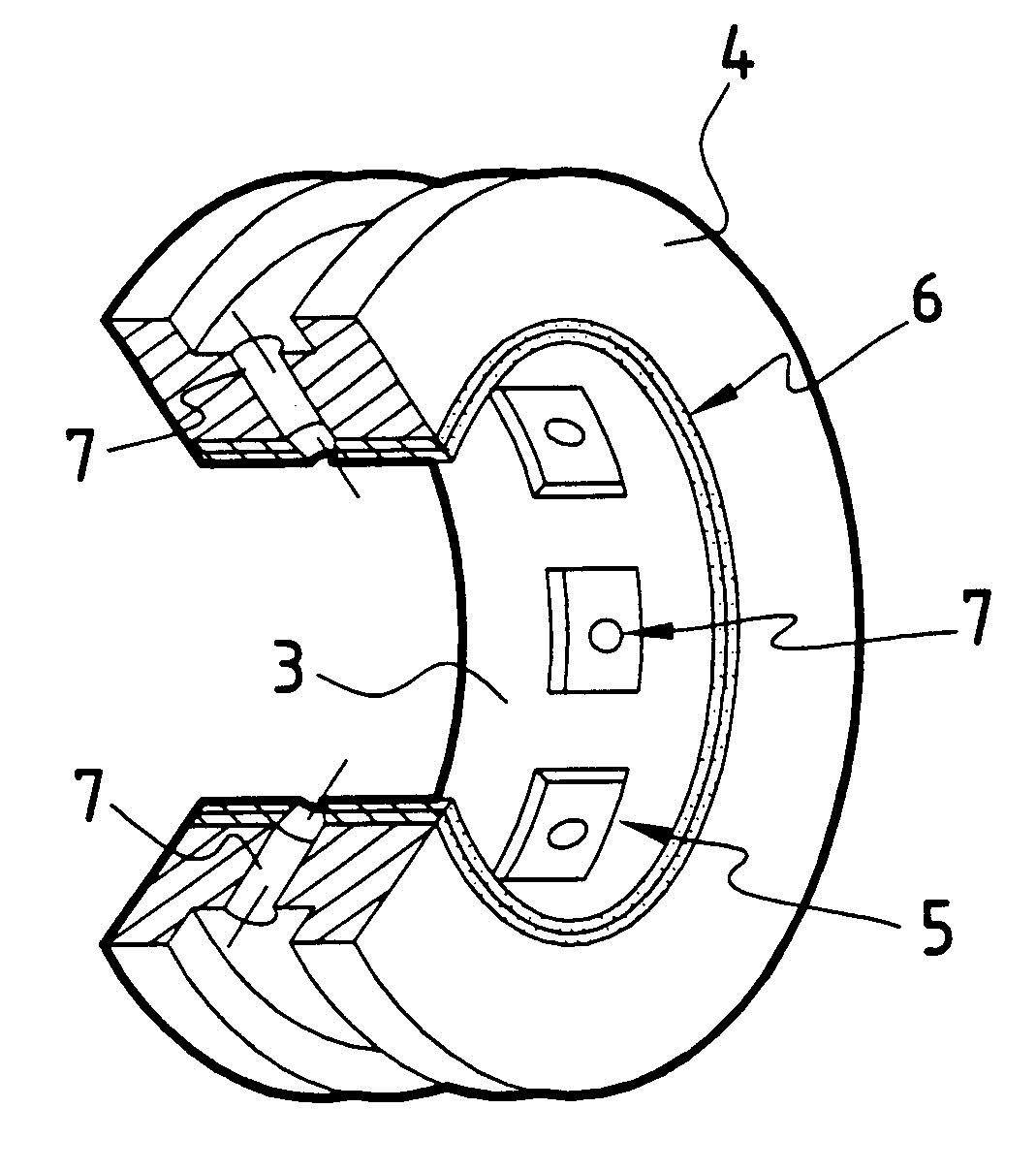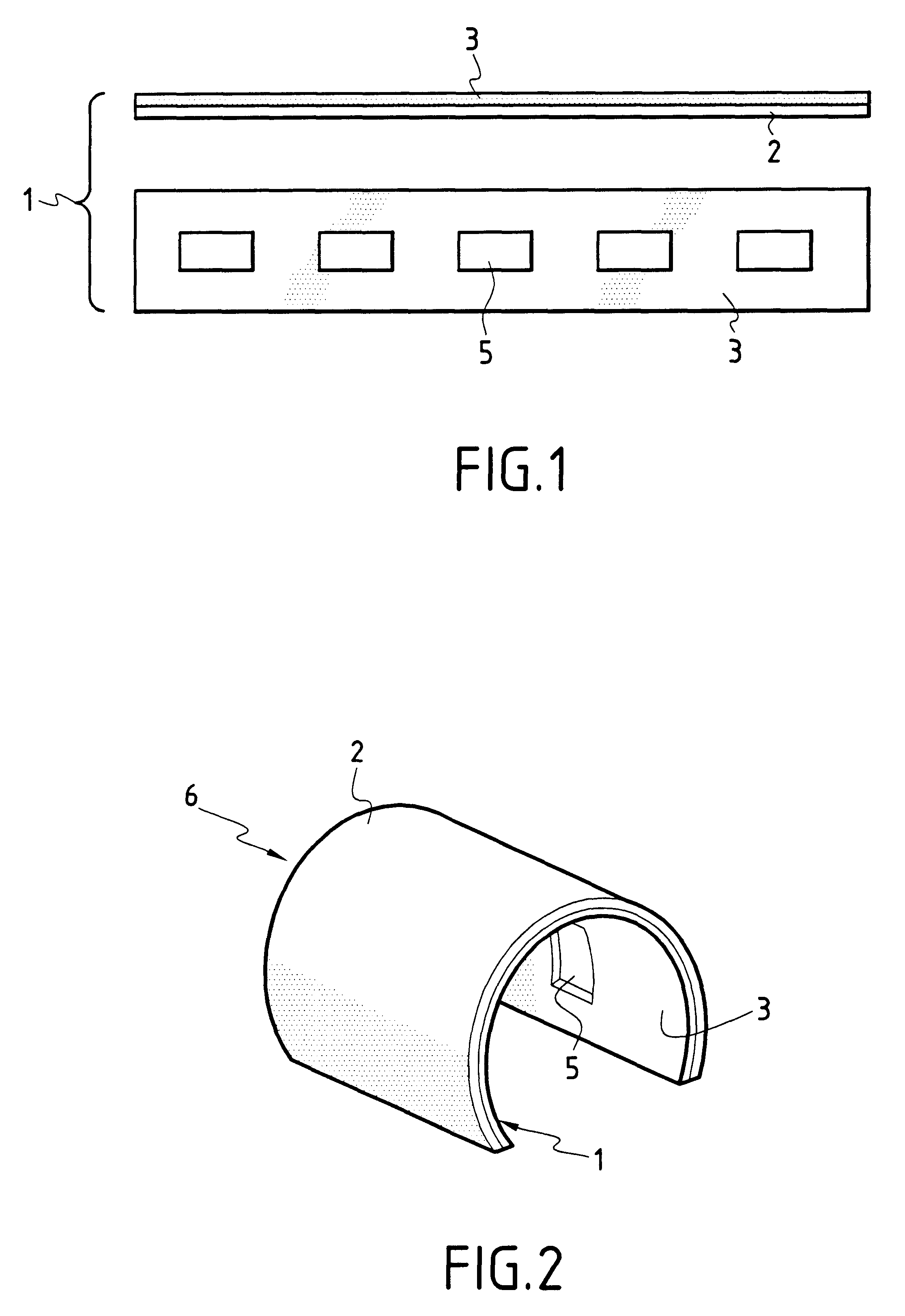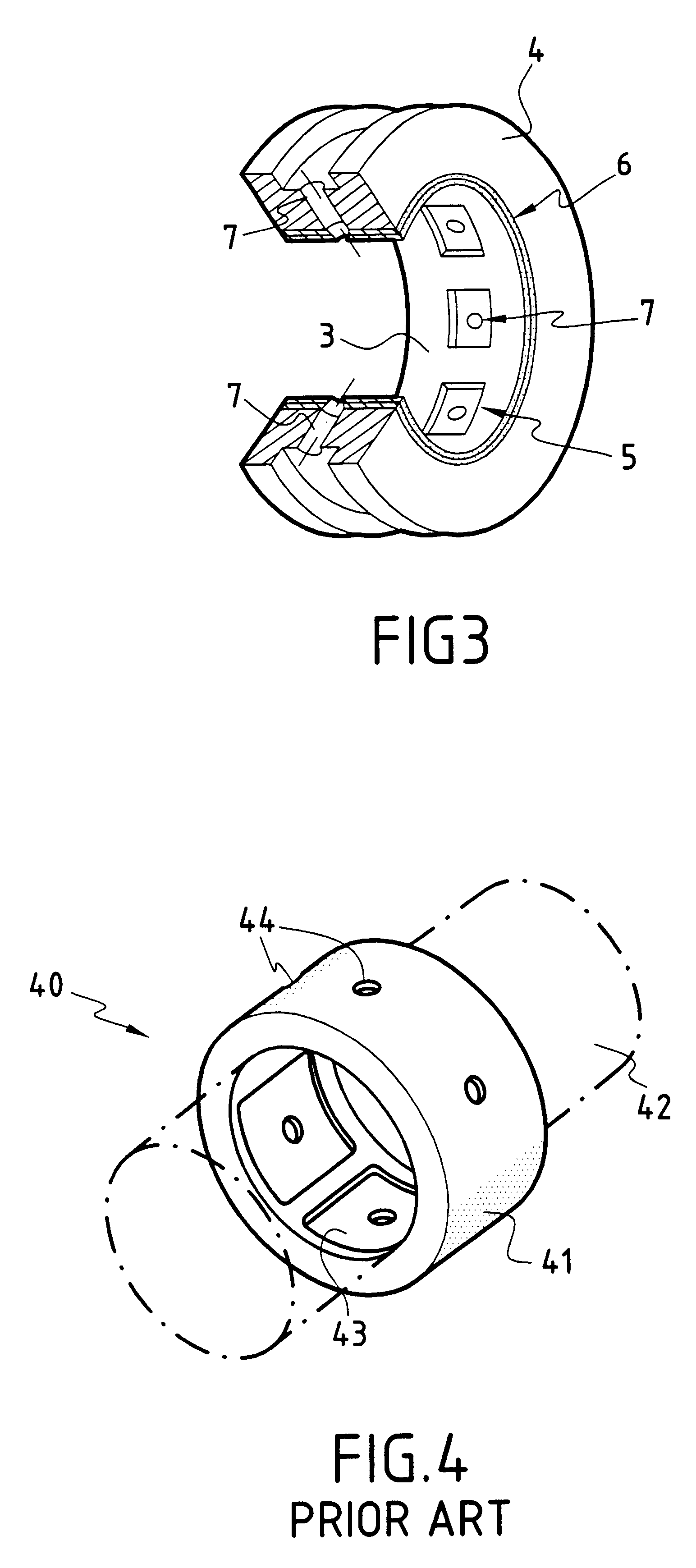Cellular hydrostatic fluid bearing, and a method of making it
a technology of fluid bearings and hydrostatic fluid, which is applied in the direction of transportation and packaging, mechanical equipment, other domestic objects, etc., can solve the problems of difficult to machine such cells, difficult to machining, and still relatively little used in rocket engine turbopumps
- Summary
- Abstract
- Description
- Claims
- Application Information
AI Technical Summary
Benefits of technology
Problems solved by technology
Method used
Image
Examples
Embodiment Construction
FIG. 3 shows a hydrostatic fluid bearing constituting an embodiment of the invention. The bearing of the invention comprises a solid stator 4 of cylindrical shape having a split ring 6 on its inside surface which is held in place by compression inside the stator 4. The ring 6 has a first thickness constituted by a metal plate 2 which is in contact with the inside surface of the stator 4, and a second thickness formed by a layer of self-lubricating composite material 3 which defines the inside surface of the bearing that is to support and levitate a rotary shaft (not shown). The layer of composite material 3 has cells 5 at regular intervals over the inside surface of the bearing. Each cell 5 presents an orifice 7 which passes through the thickness of the stator 4 and the metal plate 2. The orifices 7 enable the cells 5 of the bearing to be fed with fluid under pressure to provide the mechanism for levitating the rotary shaft that is specific to hydrostatic bearings.
The hydrostatic be...
PUM
| Property | Measurement | Unit |
|---|---|---|
| thickness | aaaaa | aaaaa |
| thickness | aaaaa | aaaaa |
| thickness | aaaaa | aaaaa |
Abstract
Description
Claims
Application Information
 Login to View More
Login to View More - R&D
- Intellectual Property
- Life Sciences
- Materials
- Tech Scout
- Unparalleled Data Quality
- Higher Quality Content
- 60% Fewer Hallucinations
Browse by: Latest US Patents, China's latest patents, Technical Efficacy Thesaurus, Application Domain, Technology Topic, Popular Technical Reports.
© 2025 PatSnap. All rights reserved.Legal|Privacy policy|Modern Slavery Act Transparency Statement|Sitemap|About US| Contact US: help@patsnap.com



